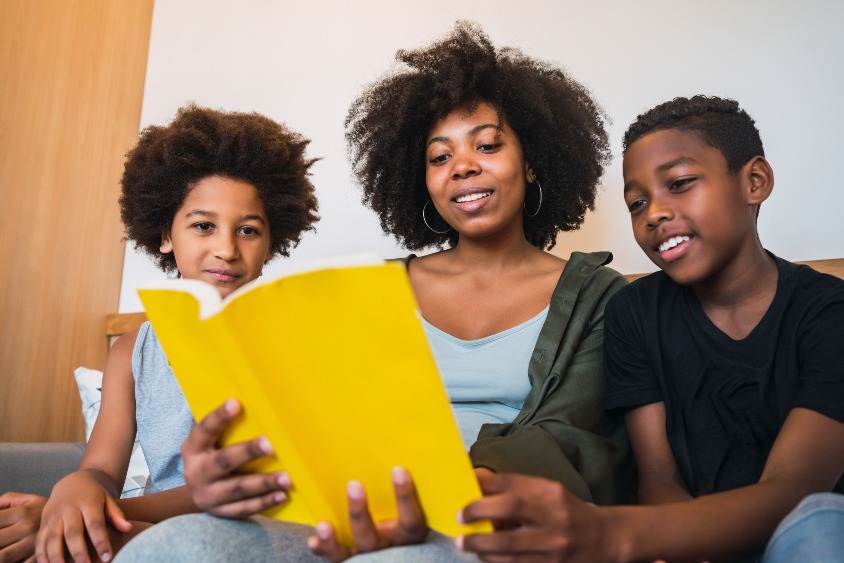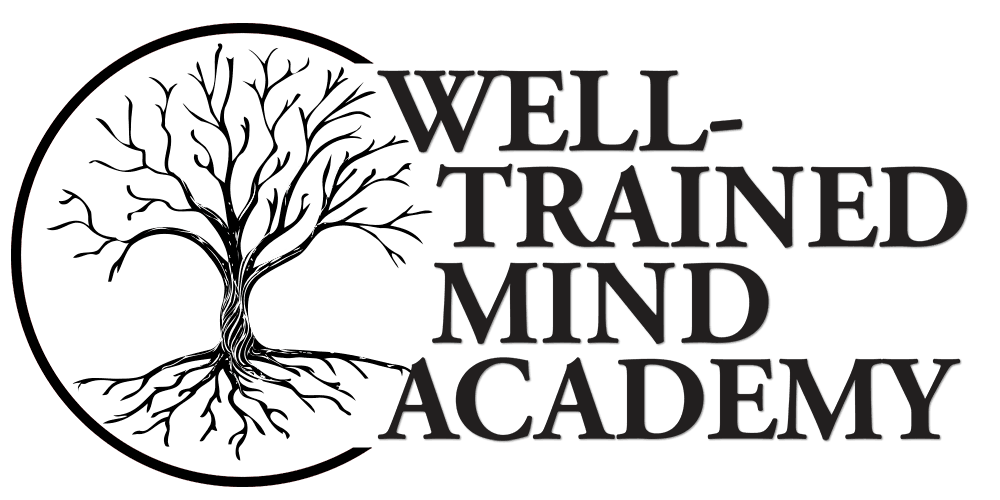How to Unplug After Online Learning

Since March, more and more families have gone online to cover their schooling and entertainment needs. For example, many public and private schools offer Zoom classes, and students (and families) are noticing that kids might turn into “Zoombies” as they spend hour upon hour in online classes. For many brick-and-mortar institutions, the general approach to online learning has been an attempt to replicate the “seat time” in a traditional school day. Parents are also grateful for the distraction that online streaming services provide, as they allow kids to interact with their teachers and peers digitally while parents can steal a “kid-free” hour or two to answer emails or catch up with other online tasks. But all that means that, for many families, way too much time is being spent in front of screens.
Chances are, you have noticed that while all the distractions and educational opportunities offered by digital technology help lighten the load of educating, parenting, and working simultaneously, kids are growing restless and possibly even surly. Kids and parents may be having trouble unplugging and even getting to sleep at night.
As an academy instructor who teaches and grades online, as well as fights to keep the inbox under control, I’d like to share a few of the things that have worked for my family to unplug for a bit and enjoy one another’s company.
Contents
Practice Noticing
Part of what makes digital entertainment so, well, entertaining, is that it constantly bombards us with sound and visuals. After an hour of watching, we might feel like we haven’t used our brains. However, we might find that we are, in fact, exhausted. And if we’ve been running a TV show or movie in the background, we may not have had to truly focus on just one thing. Our attention has been pulled in several directions. To counteract this, there are a number of offline activities that help kids slow down and practice the art of noticing.
The Tray Game
When I was young, my birthday parties in early elementary school featured a tray of things my mom collected from throughout the house. Five buttons, a small stuffed animal, rocks, old candles, you name it — so long as the object didn’t take much space on the tray, it was a great candidate. My mom included different numbers and colors of the same objects, as well as objects of different sizes. Kids (and grownups) would get to stare at the tray for a minute or two, and then the tray would be removed. Next, it would be up to the player to remember what they saw and write it down in another several minutes. Then, the tray would be brought back out, and we’d check how accurate our memories were.
Kids can be included in not just the game, but also in the selecting and the cleaning up!
Bird Watching
While checking out books about birds for science, my family came across a book that introduces kids to bird watching. The introduction was lovely — the author emphasized that birds live everywhere, even in the city; that so much of watching birds is sitting quietly and waiting; that drawing birds can bring kids lots of pleasure; that it’s the practice of drawing and learning to give attention to the bird, rather than drawing perfectly that’s the goal; and, perhaps most importantly, that we didn’t need any special tools to watch birds. After reading the book, we spent an hour in quiet, watching birds, drawing, and making notes about what we observed. The exercise proved a great way to slow down and reset.
Look at Art
Because of the pandemic, many world-class museums have digitized their collections or allowed access through Google. Still, this online access means that we’re spending time in front of the computer rather than reading books or interacting with one another face-to-face.
Pick an artist you’d like to learn more about, and check out a book about the artist (or the movement the artist was involved with) from the library. The volume doesn’t need to be written specifically for kids; the ideal volume features full-color prints. Read about the artist, and take time with the work(s) of art. If you are looking at a painting, describe to one another what you see: is there a scene depicted? Who or what is in the painting? What colors are used? What shapes do you see? Is the painting dark or light? How does the painting make you feel? Do you wish you were in the painting?
Similarly, with sculptures, you can talk about what shapes you see and also get a sense of scale: How big is the work? How do you think it would feel to touch it? Where is the sculpture light and dark? Does the sculpture depict a scene or a person? Is it abstract? For sculptures that are more abstract, what does the sculpture remind you of? How does the sculpture make you feel?
After you’ve enjoyed thinking about a few works of art, try your hand at copying or responding to the work of art. You can think about how the artwork is assembled and respond to how the work makes you feel.
Find a favorite read-aloud
Most homeschool families already read aloud to one another. Still, it bears repeating: finding a book to read aloud to younger children (and not-so-little kids!) can be a very rewarding shared experience. Reading aloud causes both the reader and the listener to pay attention differently, and it provides opportunities for additional conversations than silent sustained reading. Since schools went online in March, we’ve enjoyed reading a few classics and will continue this family practice, even if things return to “normal.”
Audiobooks
Slightly different from reading aloud, audiobooks open up a number of options for your family. At any age, families can enjoy listening individually or together. The great thing about audiobooks is that the listener(s) can play quietly, work on a craft project, do a little light housework, or simply rest and close their eyes. Many libraries carry an assortment of audiobooks and even offer digital check out; monthly subscriptions to a service are also an option for your listening needs.
Physical Fitness
Crafting/Making
Being online and in front of screens for a long period of time means that we’re sedentary, even if we are typing a fair amount. Taking up a craft can help engage the mind and develop fine motor skills while teaching spatial problem-solving. Something as simple as making your own playdough and spending time making different forms and shapes can activate your mind; if you aren’t happy with your work, it’s easy to ball it up and start again. Needlepoint, from working with a larger gauge plastic fabric, to burlap, to cross-stitch, is a great way to train reading instructions or interpret a diagram and work on hand-eye coordination.
Going on Walks
Going on walks is perhaps an obvious recommendation. Still, it’s good to remember that getting outside and moving around a bit can help break the monotony of computer work and restart your thinking. Set a timer to remind you it’s time to walk, and then get up and go. Don’t let bad weather deter you — as they say in Germany, there’s no bad weather, just bad clothing. Grab an umbrella, pull on a coat, and get moving!
If you’re walking with little ones, then there’s the challenge of keeping them moving. A scavenger hunt keeps kids engaged and looking. If you don’t feel like creating your own, a quick Google search will yield all sorts of searches you can print out and use to play along at home.
Dance Party
When our oldest went to school, the teacher would play music and get kids dancing. You can do the same at home! Play a great song and use the opportunity to get silly and dance. If you’re doing it right, you’ll all get a laugh as you move to the music.
Making time at home an adventure
Learn about another culture through food
Maybe your family isn’t doing take out, but you can still encounter another culture through food. Authentic recipes can be found on blogs written by cooks from specific cultures, and they’ll often include notes on how to find certain ingredients or have tips for adapting recipes for non-native tastes.
Since foods are associated with holidays, you might think about learning about a particular culture when an important holiday comes around. This approach has the added benefit of getting a sense of when important holidays happen throughout the year.
Teaching housekeeping
Our family has had some success with this. When I’m taking a break from my screen, sometimes it’s just to get the dishes into the dishwasher or fold a load of laundry and put it away. This gets me up and moving in the middle of the day and also ensures that all the housework doesn’t pile up for the end of the day when school and work are “over.”
You can include kids in these tasks, too. Handy online chore charts (just search online for “chore chart” and your child’s age) can give you an idea of what kids are capable of doing at every age and let you know what expectations are realistic. Little ones can practice matching by pairing up socks (this works really well if your family is like ours and loves socks with silly prints), and older kids can sweep the stairs or the kitchen floor. Just remember: if you’re including kids in tasks, they’ll likely take longer. The jobs may not be done quite to your standards, but they’ll be done. With time, your kid will get better at these tasks. Rome wasn’t built in a day, and hospital corners on beds don’t make themselves.
The pandemic has changed our daily lives, in some cases, dramatically. As educators and adults, we can find little bright spots along the way and use valuable tools to help us along the way, both on and off-screen.

By Elizabeth Edwards, Chair of World Languages
I live in Virginia with my husband and sons. When I’m not outside in the garden or riding my bike, I’m reading the latest German novel or cooking the recipes my mother taught me.
